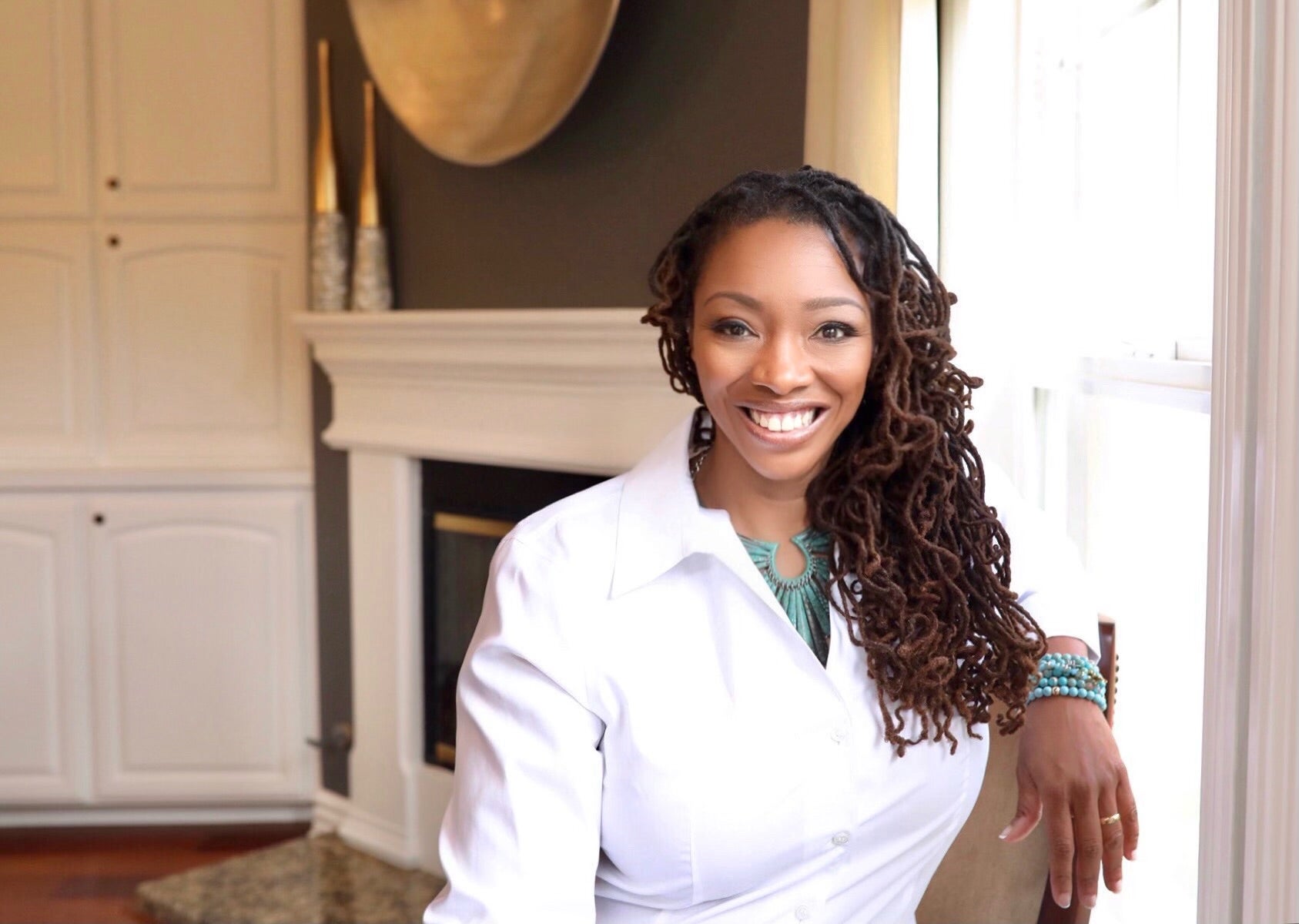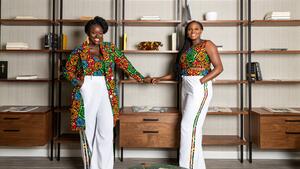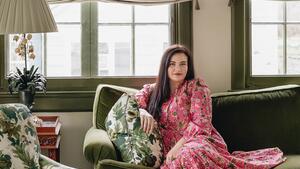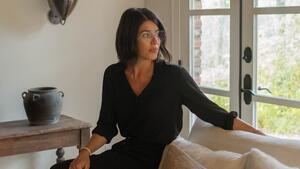The 50 States Project is a series of candid conversations with interior designers across the country about how they’ve built their businesses. This week, Omaha, Nebraska–based designer Nikki Klugh tells us the lessons she’s learned about managing an effective team and how she reinvests in her staff.
Did you always know you wanted to be a designer? Or what was your path into the industry?
My mom and I used to decorate our home on the weekends—make curtains, or do faux painting on the walls, or change out light fixtures. We even learned how to do the geometry to do compound miter cuts for crown molding. She worked a stressful corporate job in the oil industry in Houston, so the weekend was our playtime. I say my mom is my muse, because that’s really where I developed the love for design and how it could change a space. In my designs, even when doing luxury projects, I always want it to be meaningful and nurturing, because we attach feelings of comfort and safety to our surroundings. I was teased as a kid, but at home, I felt safe and secure because of the people around me, but also because of being with the things that I loved.
But growing up, I didn’t know that I could do design for a career. I was really good at math and there was a big push for women in STEM, so I went to an engineering high school. That was when computer programming really started taking off, so we learned math with programming and robotics, and how to code to write your name on a block of plastic. And then in college, I majored in chemical engineering and math.
How far along that path did you go professionally?
I switched to math my junior year after being bored out of my mind by the chem classes. My backup plan was to be a math teacher, and I was within hours of completing a math degree, but I never did. By then I had met and fallen in love with my now husband, and we dated long-distance. As soon as he graduated from college, we got married, and within six months, I was pregnant. I did go back to school for a semester after having our oldest son, but all I wanted was to be home with my baby. Now we have four kids, and it was when my youngest son was born that I went back to school for design.
What inspired you to do that?
My grandfather had built his first home with his own hands, and eventually he bought three acres of land and moved that home to the new property. He built a new home for himself and gave that old house to my husband and me, and that’s where we had our first three children. Making that old house a home again really started me down this path.
My grandmother had flocked wallpaper in the entry and marble floors and pocket doors and an in-wall vacuum—all these things that were built in the mid-1970s when I was four years old. Maybe they were a little ahead of their time—at least for anyone in our family. No one in our family had ever had those kinds of things. I lived there with them because my mom was in college when she had me, so my grandparents basically raised me. Even after she graduated, they would have me early in the morning, take me to school and pick me up from school, so I spent a lot of time there.
And then you got to live in that home and make it yours. That’s beautiful.
I got to raise my own family there for the first four years, while my husband was in medical school in Houston, and then we moved. During that first move is when I started sketching. We looked at buying our own first home, and I was doing furniture plans—I didn’t know that’s what they were called at the time—and watching Room by Room and Divine Design. That’s when I started to realize that design can actually be a career.
Since then, we’ve moved multiple times. In addition to my husband’s [medical] training, he’s also in the Navy, so we’ve lived in five different states. We went from Houston to Maryland to New Mexico—that’s where we bought our first house, and where I went to design school. Then in 2003 we moved to Palo Alto, California, where I started working for a friend of our neighbor’s.
How did that come about?
I had promised myself that I wouldn’t start looking for a job until I unpacked all of our household goods. About two days after I unpacked all the boxes, I was talking to my neighbor, and I found out that her best friend from high school was [a designer who was] working on a multimillion dollar design-build project in Palo Alto. So it was kismet. She connected us and my interview was a walk around the Stanford Dish, a popular landmark in the area, and then I worked with her for two years.
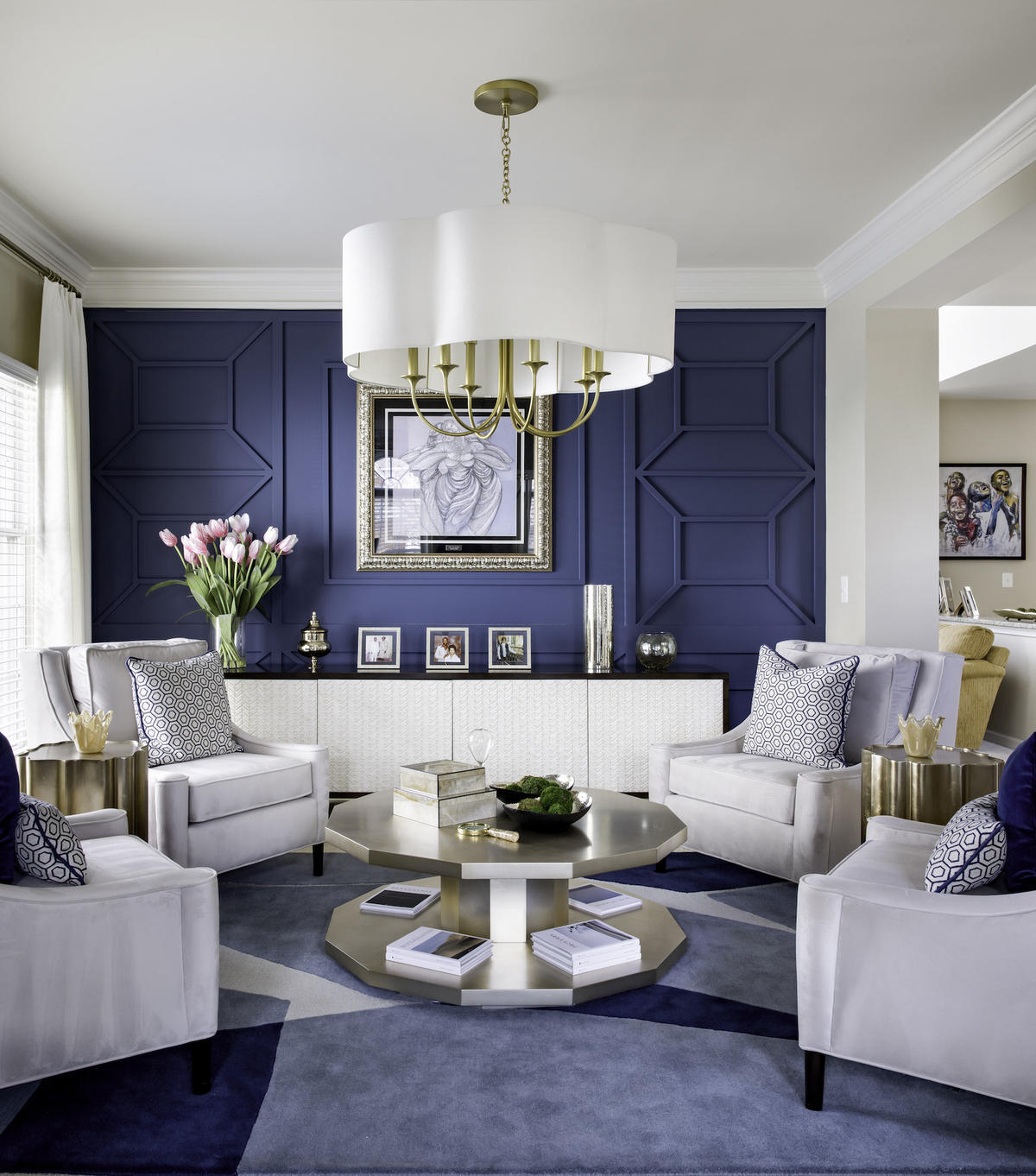
So that one project was your first design job.
Yes, and it was such a spoiler. It was an unlimited budget—I think the total was about $14 million in the end. They bought four lots—two facing one street and the back two facing the next block—and scraped them to build a three-story main house with high ceilings in the basement that was 6,000 square feet and a two-story pool house that was 4,000 square feet. There was imported Jerusalem tile, and I remember submitting an invoice for $100,000 for kitchen hardware. I was just floored by the whole process.
Had design school given you the tool kit to be comfortable with those kinds of dollar amounts?
Not at all. It was so surreal. I had four kids by that point, and I was driving a maroon Oldsmobile Silhouette that was barely working. That invoice sticks out because I was like, “I could buy a whole car with the hinges and doorknobs for the kitchen.” I just was overwhelmed by the disparity, and I started putting up a barrier—which I’ve just in the past few years gotten over—around not wanting to be a luxury designer.
Did you keep working for that designer after that project?
No. She wanted to stop taking clients to spend more time with her kids, so that was the one and only project that we did together. We’re friends on Facebook now, and she always comments on my things and says, “I’m so proud of you.”
Around the same time, just by chance, I got my own first paying client. It was a whole town house in Redwood City, California—multiple rooms. I think what that first large project did was give me the courage to take a project on my own with no fear. Even though it had a budget, I knew the steps, I knew the process, and I felt empowered to carry through a whole job.
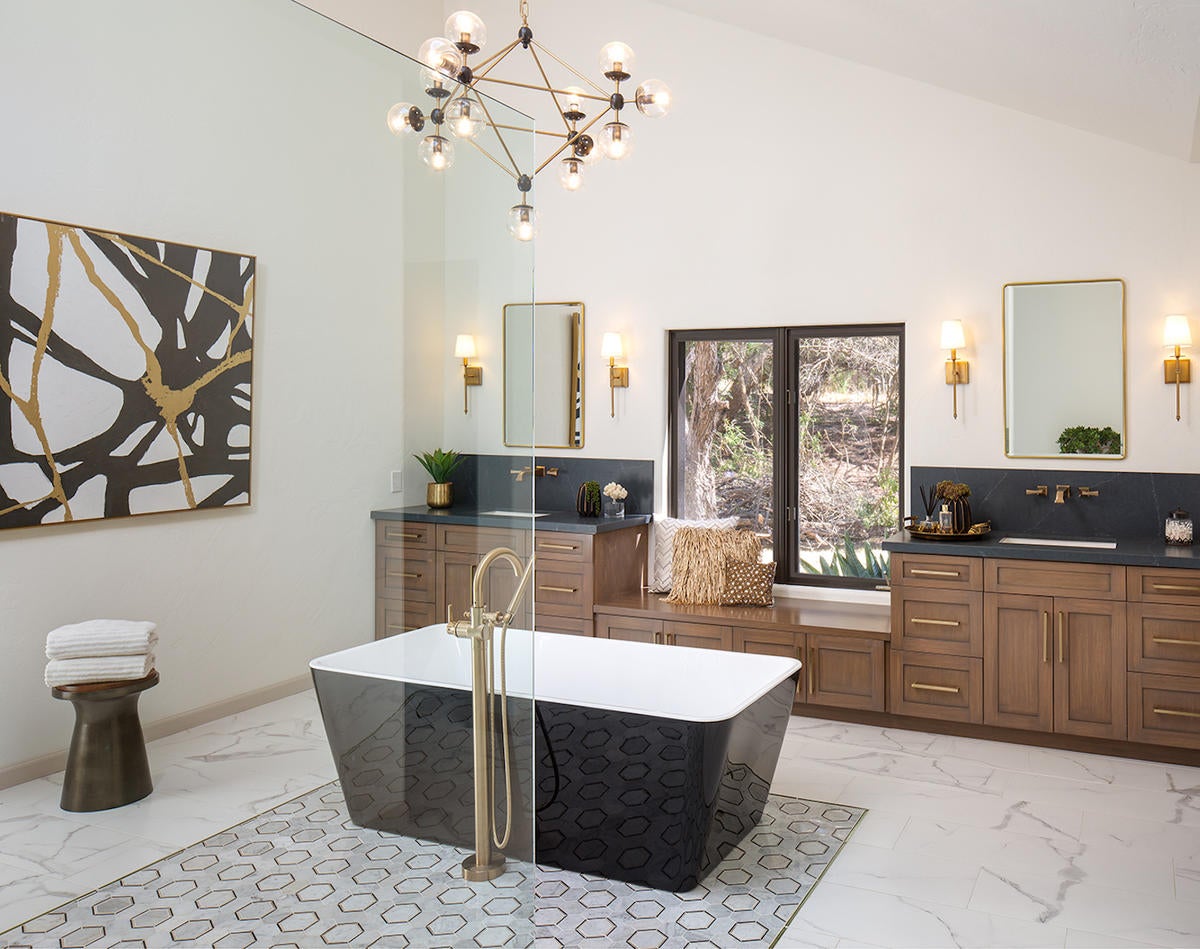
When did you officially establish your business?
I got my business license and started taking clients in 2003, and the next few years were really busy. My first client in Redwood City referred me to her nursing friend, who referred me to a few more nursing friends, so I had this whole chain of nurses. I was also the president of the parents club and got clients that way too. I went from having to work a part-time job to making $75 an hour, working around my kids’ schedules while my husband finished his training.
But after that, it was time to pay back the Navy for paying for medical school and residency. We moved to San Diego in the middle of the crash of 2008. I had no website, no portfolio pictures, and I didn’t know how to sell anything because until that point, I had essentially walked in the door and the job was already mine based on a referral. I couldn’t tell you why [you should] hire me besides that this person recommended me—but there was no one to recommend me in a brand-new city.
How did you start over?
I was my own first client in San Diego. We had looked to buy a home but weren’t finding anything in our price point and decided to rent instead. I got a job at a local furniture store, and I started seeing people coming in and buying furniture to fill whole homes. You could sense that there was something in the air, something different. I was asking clients, “What’s going on? What’s the rush? What’s the excitement?” They were buying homes for way under market value, which left them with extra money to furnish that home.
So we started talking to our real estate agent and realized that prices had dropped significantly. I didn’t really know about the economic situation, or what a crash was—I guess I had lived through three or four by that point, but I’d never really been on my own to figure it out. It gave us the opportunity to buy our own home. In working on that, I started thinking, “I guess I’ve got to start getting my own clients again,” but again, not really taking in completely what it meant to be in the middle of a crash.
It was about that time that I met Lisa Nichols, a motivational speaker and trainer who taught people how to build a business at a time when so many people were losing their jobs and going from [focusing on] self-improvement and self-care to entrepreneurship. It was through her that I learned the pillars of business: marketing and sales, and how they’re two different things but they play together; operations and finance; how to be a better public speaker. I also learned how to develop a one-to-many model—in my case, that meant collaborating with a real estate agent, who sends me their clients, who then refer me to many other clients, all rooted in this one solid relationship.
So that’s how I started building my business in San Diego. I would do staging, even though I hated it, because that’s what everyone kept asking for. I was like, “Maybe they’ll see that I’m reliable and priced fairly, and they’ll start referring me to their clients who want to redo a kitchen or bathroom.” And they did. Because of that entrepreneurial tribe, I started gaining new clients in Atlanta. Being from Houston and going to college there, I have a lot of friends there. I designed my sorority’s international headquarters in Washington, D.C., so I ended up with clients there because I would do some speaking while I was in the area, and because we had lived nearby in Maryland for two years. That got me clients in like five different states. And then as a Navy spouse and [with our history of] moving, all of those old relationships and people I stayed in touch with have called back and hired me.
So from that moment forward, your business was never really rooted geographically in where you were located. You’d never be stuck if you had to move again.
San Diego is my strongest hold, I would say, because we were there for so long. But it’s all of these little pockets of places, [where I have] ties to people.
You are in Nebraska now. What brought you there?
My husband retired from the Navy after 32 years of service in September of 2020. He had started the interview process for a position in Omaha as a department chair for pediatric neurosurgery in February of that year, but then the world shut down, so I didn’t get to go visit the city. My first time in Omaha was actually getting off the plane to move there, with all of our personal goods coming across the country in a moving van courtesy of the Navy, but I have loved it here. I was really hesitant about the winters because they’re very harsh, but I guess my blood has thickened—that, or this past winter wasn’t as bad. But at least we’ve managed to learn how to cope with the snow. And I’ve found that by being in the middle of the country, I get to see my clients on the East Coast and West Coast easily.
Since you moved to Nebraska, how much of your client base or your business is local?
I’ve been hired four times here in Omaha. Two were right away, within the first six months, and local business has been slowly growing since then. But one thing I question is the fact that I’m away from Omaha a lot. I’m serving clients in San Diego, and if I’m not in San Diego, I’m in Atlanta or Houston or D.C. I love traveling, and I love that I get to see my family in Houston—that was actually one of the reasons I started focusing on taking clients there, was to make sure I got back to my hometown often. But now my focus is more on being home in Omaha and rooted with my husband. We’re new empty nesters and I don’t want that freedom of not having children here to pull me away from him, so I’m focused on recentering on our relationship and doing good work locally.
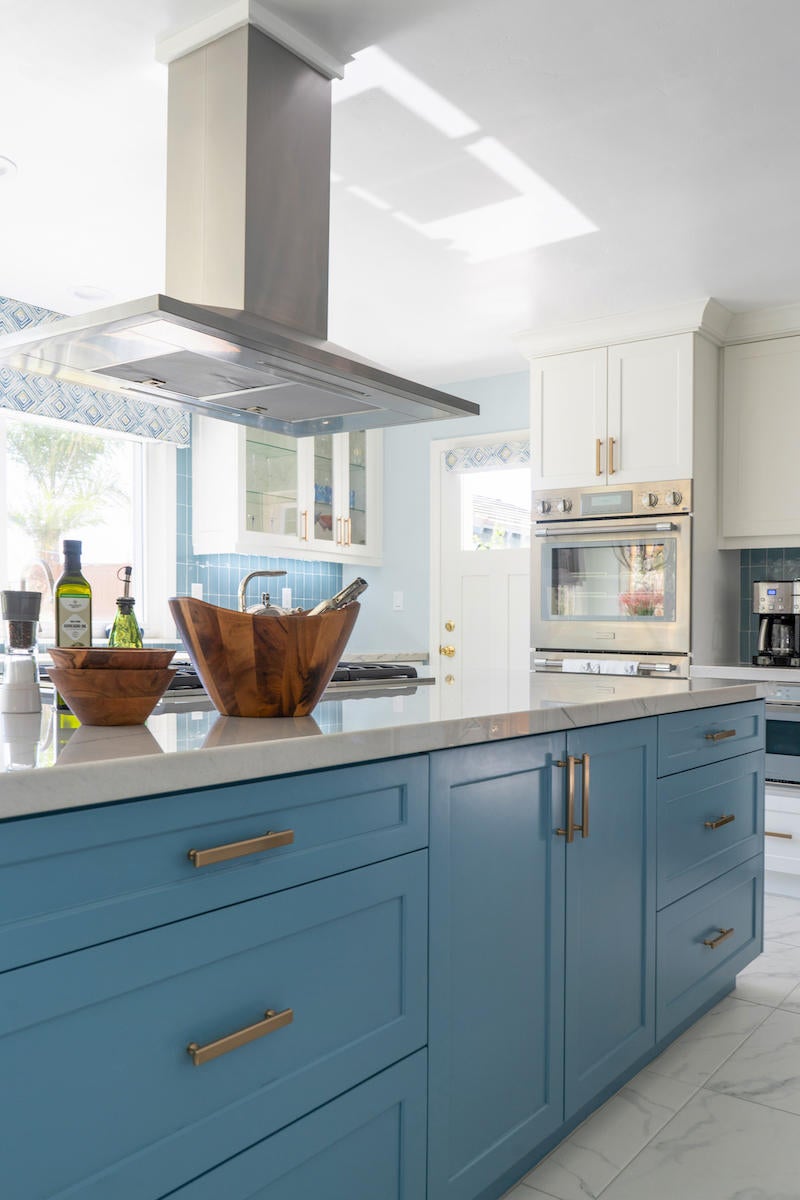
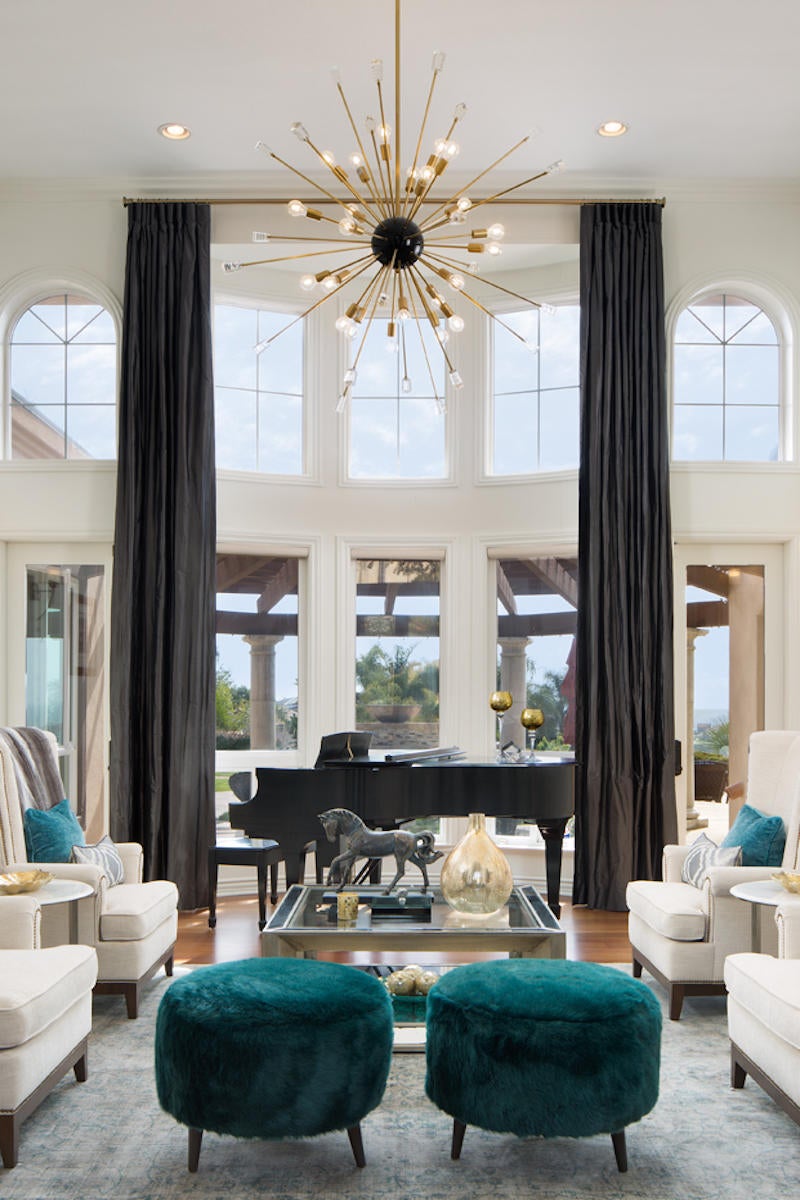
How did your business grow, and when did you start hiring?
I was at a neighborhood block party in San Diego when someone introduced me to Lisa Gant. They were like, “She loves design; you two should meet.” She had a whole career in government contracting, but she made me her [design] mentor. At the time, I didn’t have any projects—so I was like, “I don’t know how I’m going to be your mentor.” Our first [shared design experience] was me showing her how to style my glass-front kitchen cabinets. I emptied them out, she put everything back the way she thought it should be, and we took a picture. Then I said, “OK, I’m going to make a few changes and tell you why.” That was our first lesson on styling.
When I got a client in L.A., she went along for the ride. Sometimes it was two and a half hours, and sometimes it was four, to get to and from this living room and kitchen remodel for one of Lisa Nichols’s employees. That was our first client together. Because I was starting to make a little money, I was like, “I’ve got to pay you something.” She still works with me after all these years but also has her own full-time career. It was a while before I hired someone part-time and started understanding all the tax ramifications.
What made you feel safe to make that first real part-time hire?
I definitely had more work than I could handle, and I needed help with some of the basic things. Being in these entrepreneurial groups, I had learned about the McDonald’s model of pushing things to the lowest level. Whoever is making $10 can do this, and that’s what they need to do. If the $10 person can’t do it, that means the $20-an-hour person can do it and they need to be the one responsible for that. For me, that meant tiering the multitude of tasks between interns and then my first part-timer, and then eventually some independent contractors. Understanding how to tier pay rates and responsibilities let me tiptoe into hiring more and more people.
How much of your team is full-time, versus part-time and contract?
We have one full-time designer and a procurement person, two contract designers who work up to 20 hours a week—one is Lisa, and the other has their own design company—and then we have a part-time office manager, a project manager and a full-time CAD person who is based overseas. And then we have a contract in play to work with designers across the country so that we can assign them projects as needed.
So your team was pretty much fully remote—long before the whole world went remote?
It was. In San Diego, I had at most two people on the team at once—and even then, those would rotate in and out with interns and young designers. I say I’ve probably trained more designers than anybody, because I would just cycle through employees. That was one of the hardest things for me: learning to be a leader, effectively communicating, setting expectations and then measuring them, and not letting things go beyond acceptable and then having a blow-up. It wasn’t ever horrible, but it led to a lot of pressure and tension. It was challenging to not only be a creative myself, but to learn the business side and then manage all these creative people in one space. So we worked really hard to get systems and processes in place—using project management software, having business experts come and advise us on how to set things up account-wise.

When you are outsourcing work, do clients see you or do they interact with your team members?
That’s something new for me now. With Lisa, because she’s been with me so long, I will assign her to a project, and depending on her availability and the location, she can totally interface and interact with the client without me. But for anyone else, it’s taken a lot of trust and patience—and me purposely pulling back to say, “I’m the principal, so I see and approve everything, but this is your lead designer.” Part of my perfectionist tendency means I want it to be perfect and think that nobody can be as good as me or do it the way I want it to be done, but I’ve really had to get out of my own way so that we can grow.
Often, when we give our company our name, they’re coming for us, which can be a good thing and a bad thing. Some of it is that our egos get tied to it. It’s like, “Well, they want me, so I have to be the one.” But I’m starting to see that while they are hiring me for their headquarters and for their homes, they understand that I can’t have my hands in everything. I really do need to turn things over to my team and let the people who specialize in this one thing take care of that one thing. Like procurement—we have a dedicated staffer for that. It makes more sense to direct clients to the right person and have those answers come from her, instead of me trying to remember what the report said. We also keep all of the project information in Teamwork, which is a system like Basecamp or Asana or Trello, where the client can put the question in one spot and the person who needs that information can be tagged and can provide the answer.
What pushed you to make that choice?
Wanting to grow. I have a goal of hitting $1 million in sales annually, and there’s no way I could do that on my own. I know a couple high-end designers who can do it on their own, but it wouldn’t be possible with the product we sell. We just have so much volume versus higher prices. That’s what made me see that in order to keep my sanity and hit this goal, I have to really let go.
What does it take for you to hit that goal? How many projects are you and your team working on at a given moment?
What’s happening right now is not really a realistic picture. We have so many projects that are backed up and should have been off our books by now—at least six or seven jobs on our board are projects that have lingered. But we have about 10 or 11 active projects, which is a mix of virtual, where we design and we visit three times and then we install; e-design, where we only provide the selections, the links and the diagram; and full service, with an in-person, weekly, boots-on-the-ground project manager who is available to them as we go through the project together.
That middle-of-the-road option where the client only sees your team three times—what are you stripping away from the full-service process to make that work?
I think everybody works differently, and every client has different needs. Because a lot of my clients are entrepreneurs, they’re very busy, and it’s hard to wrangle them in and get them to make a decision. It requires a lot of documentation on the first visit. The second visit is more about presenting concepts and ideas, and making sure they’ve shared everything they’ve ever thought of or wanted us to include. That’s our cutoff—no changing your mind after this meeting, or the flat fee turns into hourly. And then the third visit is the full presentation of all the material samples and floor plans and elevations. It’s a longer meeting, of course. But if you have all of these short meetings where you’re picking out a couple things, it turns into decision fatigue, and the entrepreneur clients couldn’t handle that. I started offering that six or seven years ago, and it’s been so beneficial. We still might only have two or three of those, but they’re big chunks of projects instead of going room by room.
Do you prefer working that way?
It’s more efficient, but it’s also harder. I’m a people pleaser, and that process has so many things that are so anti-people pleaser about it. I want to give them the freedom to change their mind, or to drag it out, or to add new scope of work. But working this way, I have to be really clear. So we tell them all of that upfront—we give them cutoff dates and a clear, defined scope of work. When anything new is added, we stop and say, “Well, this isn’t within the scope of work—let’s put this to the side, and we’ll come back after we finish all this other stuff.” And then we’ll talk about how it changes the contract. You just have to get used to saying those words matter-of-factly and taking a hard stance without being rude. I used to think, “That’s being mean,” but I’ve realized that’s the people pleaser in me. It’s not being mean at all; it’s being clear.
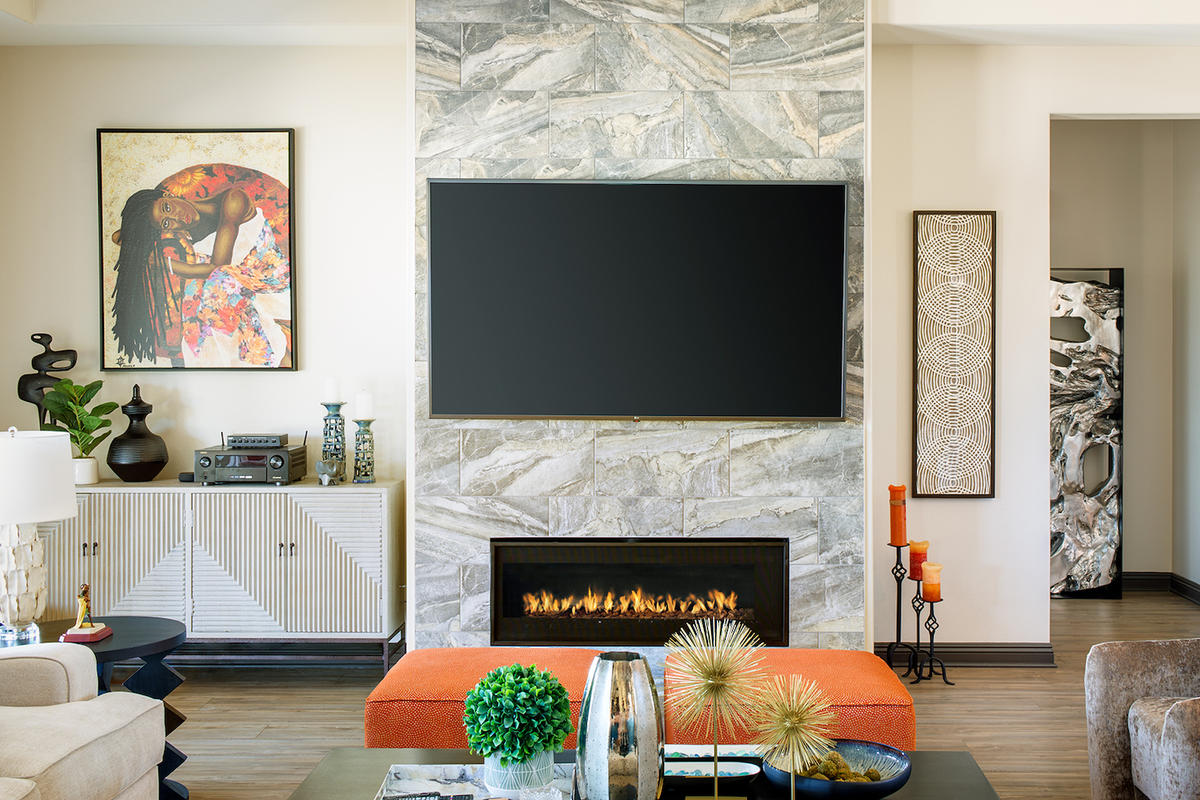
How have you approached billing for those three different ways of working with clients?
We do a flat fee for design, and then bill hourly for project management. The rationale behind that is that we know what it takes for us to design something—we know that with this scope of work, these cutoff dates and this deliverable date for the design what kind of investment we’re looking at, and here’s the fee associated with that. We’re comfortable with that. It does still require discipline—not only from me, but from the newer designer who’s full-time—to not allow clients to waffle or wiggle new scope of work in there. Jess Moeller, who is a full-time designer here in Omaha, has watched me navigate those conversations when she’s the lead designer on a project, and a client’s like, “Well, the guest bedroom was on the first go, but we took it off so we could save money, but now we want to put it back.” Well, that changes the contract, right?
But [when it comes to] project management, we just never know. We’re at the mercy of contractors, and of [having] product being delivered appropriately, so we charge hourly for project management when construction is involved. For furniture, we mark up our purchases, and the installation is included in that initial design fee and the profit on the product. I have spreadsheets to work out how much time is allotted to each thing, and we try to be better and better with tracking that.
Have you ever wavered in how you charge?
I have never felt like I wasn’t charging enough. But it was when I started building a team—and I had payroll growing, growing and growing—that we had to get more clear on what our profit margins were. That helped me make better decisions. Again, I never had any fear that I was charging too much—I’m not charging enough. I think it might be that math part of me, that math brain in me, that’s just like, “The numbers are the numbers, we’re paying our bills, we’re paying our people, we’re making a little bit of a profit, I’m good.”
When did that million-dollar sales goal become the target for you?
About three years ago. I’m part of an African-American entrepreneurial group that is really keen on entrepreneurs building enterprises and not just sole ownership. It’s about creating jobs for our communities and being the catalyst to have us grow into a better economic situation. The goal came from me realizing, “I think I can really affect change, be a leader and show other Black designers that it’s possible.” This is something that I never saw examples [of while developing my own career, so I want to show up-and-coming professionals that] we are doing this, and this is something that’s attainable.

Where do you see your firm focusing next?
We are preparing this week for our team retreat, looking at the upcoming year, with the recession being the buzz in the background and how we’re going to adjust to that. So, we definitely are looking for more commercial work. And [we want to] continue to educate about the impact of great design. Throughout the pandemic, we did a money-space challenge and helped people with their home offices. As people are going back to work, [we want to keep showing how] people can motivate their teams through amazing work spaces that affect morale and loyalty.
What does your team retreat look like?
We have all been virtual the last two years—and even before the pandemic, that’s just the way the firm has always operated. So for the retreat, we will all be together for a week in San Diego. We’re doing some team building, reviews, analysis of past projects, strategic planning for the next year, our 12-week plan so that we tackle big chunks of to-do lists and goals in the last quarter of 2022—and having some fun. We had Zoom parties and a Christmas party and celebrated anniversaries for working with the company, and you get your birthday off—we’ve been doing different things to show team appreciation, but being able to do that in person and continue to get to know one another is something we’re all looking forward to. There’ll be eight of us there, and we’re bringing in a facilitator for our two-day strategic planning part. Our office manager is planning some group activities. One of my team members will be leading us in Zumba. I’m sure I’ll squeeze in karaoke somewhere. We’ll have a photo shoot, so a videographer, photographer and makeup artists are scheduled. We’ll learn and grow and improve and really use the time together in many different aspects.
That’s such a phenomenal way to invest in your team—and I say “invest” because that sounds both amazing and expensive.
We have a budget we’re working within that has already expanded once. We rented an Airbnb for a week, and we’re bringing in the facilitator—so yeah, it is a bigger investment. But I really believe this is one of the best teams I’ve had. Everybody is really dedicated, and they’re always looking for solutions and helping one another, so I feel like this was a good reward. And then to bring them in to make decisions—I’ve been the one making all the decisions all these years, so it’s become important to me to have other people who see things from a different lens to really contribute and help shape our company and where we’re going.
To learn more about Nikki Klugh, visit her website or find her on Instagram.

















